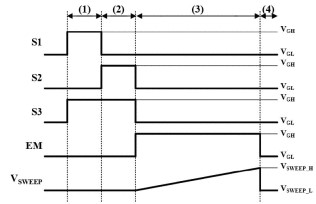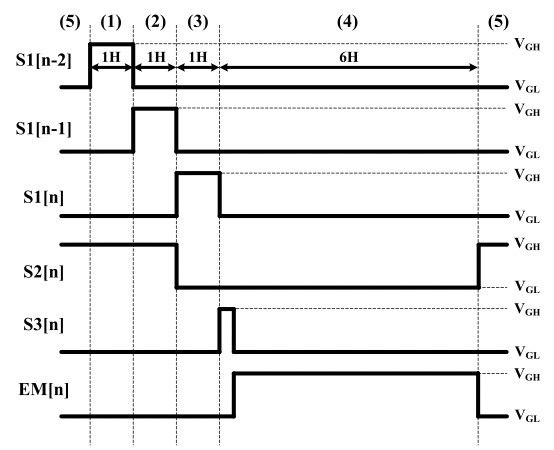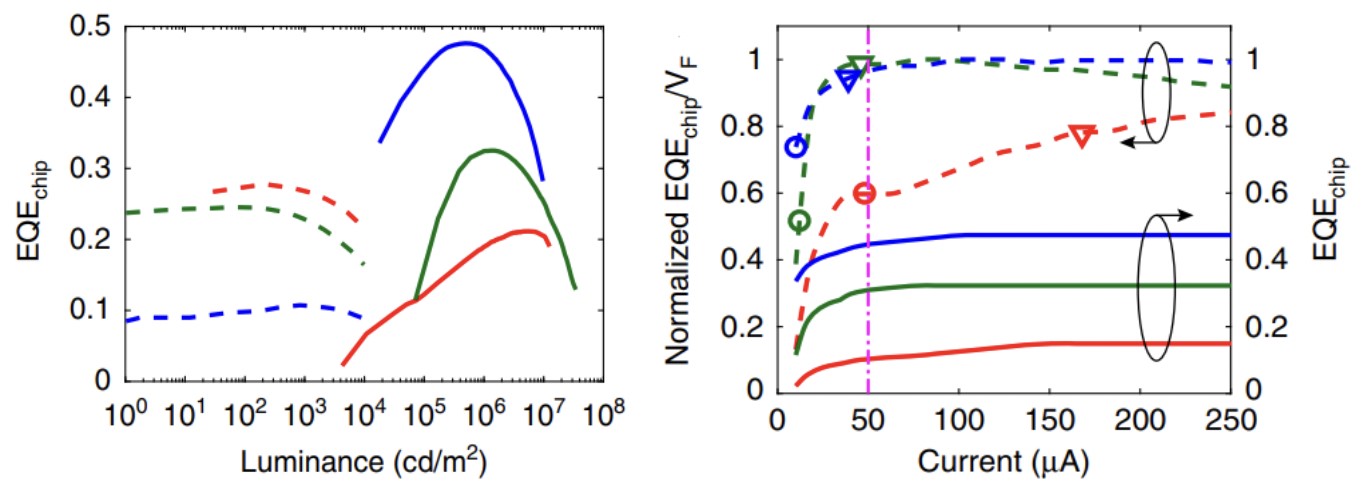| I. Research Purpose Mini LED is to miniaturize LEDs to the size of the about sub-millimeter level, and the size is between traditional LED and Micro LED. It inherits the characteristics of LED self-emissive and the use of inorganic materials. Unlike OLED displays, Mini LED would not suffer from luminance decay. The thickness and contrast ratio are similar to OLED displays, so it is usually adopted for the backlight unit. In addition to being a backlight module, Mini LED can be directly used as an emitting device of pixel circuits to achieve lighter, thinner, and higher contrast due to its self-emissive and inorganic material properties. Micro LED, which has the same advantages as Mini-LEDs, can realize ultra-high-resolution display panels with CMOS technology. Therefore, Micro LED is regarded as a new generation display technology in the display industry. However, when the driving current of Mini-LED and Micro LED is different in every grayscale, the phenomenon of LED emission wavelength shift will occur, which will cause low uniformity of display. Our lab proposes pixel circuits that can improve the phenomenon of LED emission wavelength, corresponding gate driver circuits, and the power consumption model of the panel. The pixel circuit of the hybrid drive structure with PAM and PWM driving methods will be proposed to improve the color shift phenomenon and reduce power consumption, enhancing the current uniformity and display quality. |
|
Apple proposed Mini LED backlight product |
AUO proposed Micro LED display |
| II. Research Results 1. PWM pixel circuit design The figure below is a driving circuit suitable for the Mini LED backlight module proposed by our LAB in the 2022 IEEE Journal of the Electron Devices Society. This circuit can compensate for the threshold voltage of driving TFT and VSS I-R rise to achieve high uniformity of driving current. Moreover, operating the mini-LED at the high luminous efficacy by the PWM driving method and setting only the driving TFT on the driving current path reduce the power consumption of the backlight. |
||
|
|
|
Proposed AM Mini LED driving circuit |
||
|
2. Improving the power consumption of the driving circuit
Our laboratory also proposed a driving circuit that can be applied to Mini LED backlight modules in 2021 IEEE Transactions on Electron Devices, the figure below is the circuit scheme and timing diagram. By lowering the drain–source voltage (VDS) of the switching TFT on the driving current path, the range of required voltage across the proposed circuit can be reduced, decreasing the power consumption of the mini-LED backlight. |
|||
|
|
||
Proposed AM Mini LED driving circuit |
|||
|
3. Investigated the power evaluation model
Our laboratory cooperated with the University of Central Florida to publish a study on the current status and future prospects of Mini LED, Micro LED and OLED in Light: Science & Applications in 2020, and deeply discussed the power consumption of displays. The figure below is the RGB three-color quantum efficiency characteristic diagram of OLED (dotted line) and Micro-LED (solid line). It can be seen from the figure that the quantum efficiency of OLED can remain stable in the normal operating range, but with the increase in brightness, the quantum efficiency will be unstable. In contrast, the quantum efficiency of Micro LED is better than that of OLED at high brightness, but only in this range, and it can also be observed from the figure below that the ratio of quantum efficiency and VF of Micro LED drops sharply when the driving current is below 50 µA, indicating that the power consumption of LED will increase at low current. Based on the above results, maintaining the quantum efficiency of Micro LED at the best value becomes an important key to realizing Micro LED display. |
|||
EQEchip as a function of chip luminance. Current-dependent EQEchip and normalized EQEchip/VF |
|||





